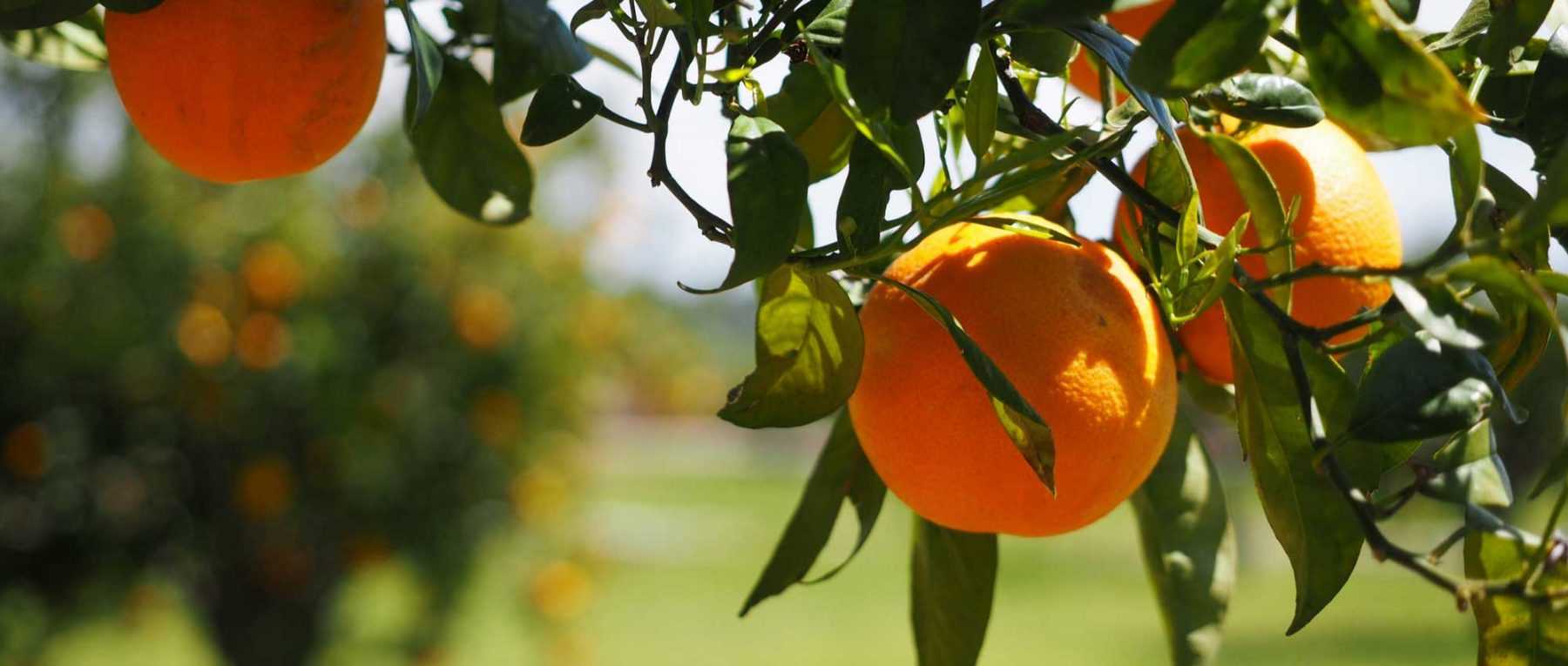
Lemon Trees, Orange Trees and Other Citrus: Planting and Growing in Pots or in the Garden
Contents
Citrus Fruits in a Nutshell
- Citrus trees produce fruits that are both edible and decorative, rich in vitamin C
- Most of them have evergreen foliage
- They produce pretty white or pinkish, fragrant flowers
- They are generally grown in the ground in the South of France, and in pots elsewhere in the country
- They thrive in full sun and warmth
- They bring an exotic touch to the garden, evoking the South, the Mediterranean, sunshine…
Our Expert's Word
Citrus trees are shrubs or small trees with glossy foliage, often evergreen, that bring a touch of exoticism and elegance to our gardens. Their charm lies not only in their vibrant green leaves but also in their beautiful white or pink flowers, delicately scented, which delight the senses from springtime onwards. However, it is their fruits, bursting with colours ranging from bright yellow to vibrant orange and even deep green, that truly capture attention. Rich in juice and flavour, citrus fruits offer tangy or sweet flesh, a true delight for lovers of freshness. Their exceptional aromatic qualities make them indispensable in cooking and pastry-making, as well as in aromatherapy. The entire plant, thanks to its abundance of natural essences, is used to create essential oils, refined perfumes, and floral waters.
Some citrus varieties, such as lemons, oranges, or grapefruits, are very popular and widely consumed around the world. But the vast world of citrus also holds rarer treasures like kumquats, finger limes, kaffir limes, yuzu, or the fascinating Buddha’s hand. Each variety brings its own unique touch, whether through the unusual shape of its fruits or its surprising flavours. Growing citrus trees is also a way to bring a bit of Mediterranean warmth into your outdoor space, evoking sunshine, holidays, and the gentle charm of the South.
However, citrus trees also require a specific climate. These plants, well-suited to warm and sunny regions, are relatively tender and not very hardy. If you’re lucky enough to live in a Mediterranean climate, growing them will be child’s play. For others, they will need to be planted in pots so they can be sheltered during the colder months, in a conservatory or unheated greenhouse. Citrus trees love full sun, so they require a bright, sheltered spot. They thrive in well-drained, rich, moist, and light soils, preferably non-chalky. It’s also essential to place them in a wind-sheltered location to prevent damage to their leaves and flowers.
Growing citrus trees also requires some attention. In pots, they should be repotted every three to four years to provide them with fresh, nourishing compost. Although tolerant of heat, they dislike prolonged drought. Regular watering is therefore essential, especially in summer, to ensure an abundant and high-quality harvest. Outside the Mediterranean basin, winter protection is essential to shield them from frost.
Botany
Botanical data
- Latin name Citrus sp.
- Family Rutaceae
- Common name Citrus, Lemon trees, Orange trees...
- Flowering generally in spring
- Height between 1.5 and 10 metres
- Exposure full sun
- Soil type rich, light, well-drained, fresh, non-calcareous
- Hardiness typically between 0 and -10°C
Citrus trees are shrubs or small trees that produce fragrant white flowers and simple, often evergreen foliage… but they are primarily cultivated for their fruits, typically yellow or orange with a sour or tangy, sometimes bitter flavour. Most belong to the Citrus genus, which includes around thirty species. Some are also classified under the Poncirus and Fortunella genera (such as kumquats). Citrus fruits include lemons, oranges, clementines, mandarins, grapefruits, bitter oranges, kumquats…
Originally, citrus trees come from Southeast Asia. They have been cultivated for thousands of years and hybridised by humans, resulting in today’s remarkable diversity. In France, they are mainly grown along the Mediterranean coast, the French Riviera and Corsica, where the climate is favourable. Menton. Today, oranges are the most widely cultivated fruit in the world.
Citrus trees belong to the Rutaceae family, which also includes common rue (Ruta graveolens), a small aromatic shrub with medicinal properties. This family also comprises Skimmia, a popular garden shrub, the burning bush (Dictamnus albus), a lovely perennial with white or pink flowers, and Choisya ternata, also known as Mexican orange blossom. Rutaceae plants are typically rich in essential oils. They are often highly fragrant, both in their flowers and foliage, and many have medicinal properties.
Etymologically, the word “citrus” comes from the Latin acrumen, referring to something with a sharp taste.
When grown in pots, citrus trees usually reach a maximum height of around two metres. In the ground, they grow taller but rarely exceed ten metres in height. Orange trees are among the tallest, while kumquats and citrons remain much shorter, around three metres tall. Citrus trees generally have a rounded shape, though some have slightly weeping branches, like the Citrus unshiu ‘Satsuma’ mandarin. When cultivated in pots or greenhouses, citrus trees are regularly pruned. Keeping them relatively compact also makes fruit harvesting easier. Many citrus trees bear thorns on their branches. The Poncirus trifoliata is one of the thorniest… It can even be planted as a defensive hedge!
Citrus trees generally flower in spring, typically between March-April and June-July. The ‘Four Seasons’ lemon tree is remontant, meaning it flowers several times a year! The flowers may be solitary or clustered in racemes or cymes. Citrus flowers are white, sometimes slightly pink or purple-tinged. Their blooms have a pure, simple appearance.
The flowers are delightfully fragrant. Those of the bitter orange tree are particularly prized for producing neroli essential oil and orange blossom water. Citrus flowers are also nectar-rich, attracting pollinating insects.


Citrus blossoms: Bitter orange (photo Zeynel Cebeci), Kumquat (photo Thanh Nam Nguyen), and Poncirus trifoliata (photo Amada44)
The flowers have a regular, classic shape, measuring 2-5 cm in diameter. They consist of five petals (sometimes four) and five sepals. At the centre, each flower has 20-30 stamens bearing pollen and a pistil. The flowers are hermaphroditic, containing both male (stamens) and female (pistil) organs.
Some citrus varieties are parthenocarpic, meaning fruits develop without fertilisation, resulting in seedless fruits like many clementines.
Most citrus trees have evergreen leaves, except for Poncirus which are deciduous. The leaves are attached to branches by often winged petioles. The leaves are alternate (arranged singly along branches) and glossy. They are elliptical or oval in shape and undivided (except for Poncirus leaves which have three leaflets). Some have serrated edges. Young leaves are light green, darkening with age, though some varieties have yellow or cream variegated foliage, like Citrus limon ‘Variegata’. Mandarin leaves are small, while citron leaves can reach 20 cm long.


Citrus foliage: Citrus hystrix (photo Mokkie), Clementine and Poncirus trifoliata (photo Karl-Ludwig Poggemann)
Citrus trees typically take several years before bearing fruit. Most species fruit between autumn (October-November) and early spring (April-May). Lemon trees, however, can produce fruit year-round. This is why they’re sometimes called “four-season” lemon trees. Citrus fruits remain on the tree for long periods, sometimes taking a year to ripen. It’s common to see flowers and fruit on the same tree simultaneously.
The fruits are decorative, adding vibrant yellow-orange hues (though some remain green). They are spherical or oblong, except for the unusual finger-like fruits of the Buddha’s Hand citron. Sizes vary greatly, from large grapefruits to tiny kumquats. Citron fruits can reach 25-30 cm long. The skin may be smooth or rough and bumpy like citrons. Some fruits are ribbed, like the ‘Striata’ bitter orange.
The fruits consist of a rind, pulpy flesh and seeds (pips), often divided into segments arranged around a central core. The segments contain juice-filled vesicles. The rind contains essential oil glands, making it highly fragrant – hence its culinary use. Rind thickness varies: very thin in kumquats (edible whole) but thick in citrons.
The fruits are prized for their sour or tangy flavour. Bitter oranges live up to their name. Some, like sweet oranges, are milder. Finger limes (citron caviar) have surprising caviar-like pulp. Poncirus fruits must be cooked before eating. Generally, citrus fruits are rich in vitamin C and have antioxidant properties.
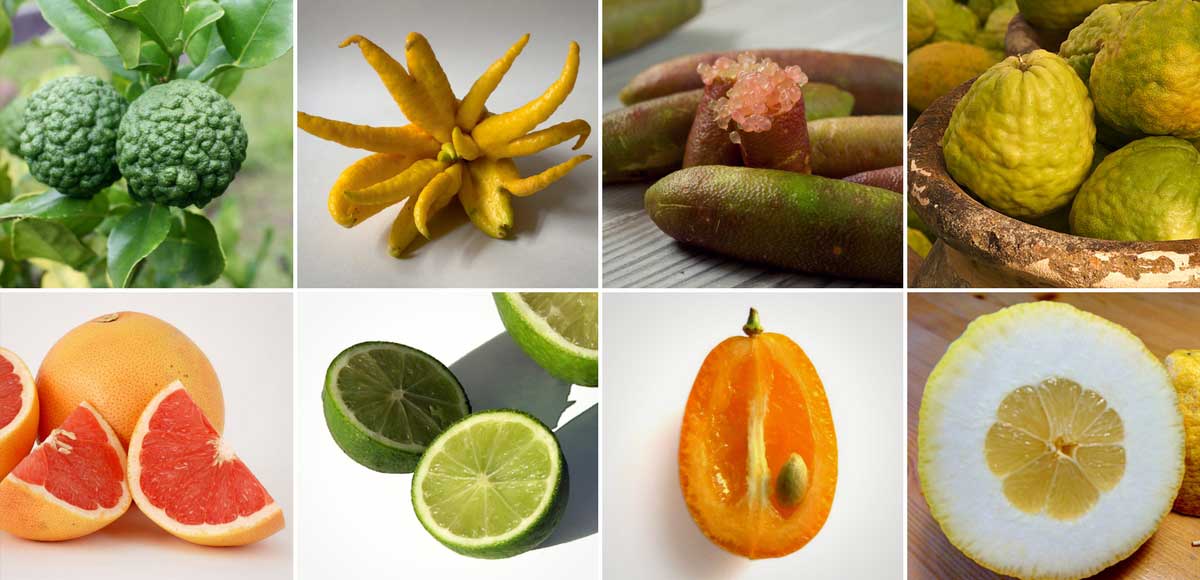

Citrus hystrix (Robyn Jay), Buddha’s Hand citron (Robert Couse-Baker), Finger lime (photo Brent Wilson – GAP), Citrus medica (photo INRA DIST), Pomelo (photo Aleph), Lime (photo Jpbrigand), Kumquat and Citron (photo Richard Huber)
Citrus trees are not very hardy. Most can’t tolerate temperatures below -5°C, especially lemons. However, hardiness depends on species, rootstock, soil moisture and duration of cold. The Poncirus is hardiest, but bitter oranges and mandarins (especially ‘Satsuma’) also withstand cold well. The first tolerates -20°C, the others -10°C. Citrus trees need some winter chill, though dwarf oranges (Citrus mitis) can grow indoors year-round.
Citrus tissues contain essential oil glands, explaining their fragrant leaves, flowers and fruits. Some produce essential oils or perfumes and have medicinal properties.
Read also
Citrus Fruits: Planting and CareThe main citrus varieties

Four Seasons Lemon Tree - Citrus limon
- Flowering time May to July
- Height at maturity 3 m
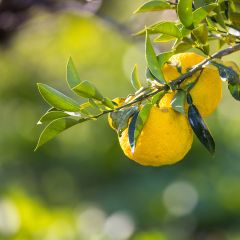
Yuzu - Citrus junos
- Flowering time April, May
- Height at maturity 3,50 m

Meyer Lemon Tree - Citrus x meyeri
- Flowering time April to November
- Height at maturity 2,50 m
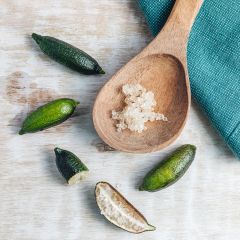
Finger Lime - Microcitrus australasica
- Flowering time April, May
- Height at maturity 3 m

Clementine Tree - Citrus clementina
- Height at maturity 3 m
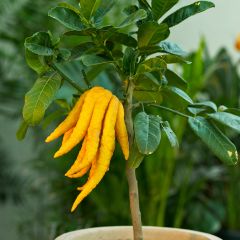
Buddha's Hand - Citrus medica var. sarcodactylis
- Flowering time April to October
- Height at maturity 3 m

Citrus sinensis 'Washington Navel'
- Flowering time April, May
- Height at maturity 2,50 m
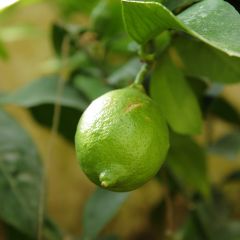
Lime - Citrus aurantifolia
- Flowering time April, May
- Height at maturity 3,50 m
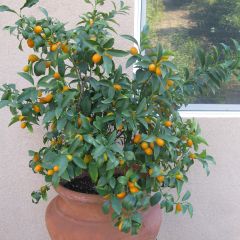
Kumquat Nagami - Fortunella margarita
- Flowering time July to September
- Height at maturity 2,50 m

Ichang Papeda - Citrus ichangensis
- Flowering time April, May
- Height at maturity 3 m
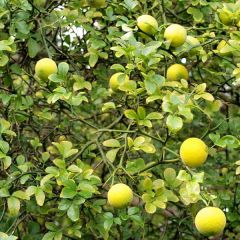
Poncirus trifoliata
- Flowering time May, June
- Height at maturity 4 m

Citrus hystrix - Kaffir Lime
- Flowering time April to October
- Height at maturity 3 m
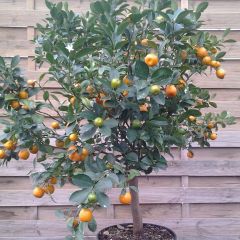
Calamondin - Citrus madurensis
- Flowering time April to October
- Height at maturity 2 m
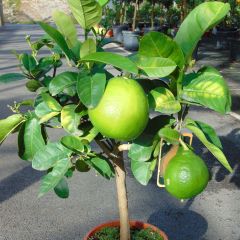
Grapefruit - Citrus x paradisi
- Flowering time April, May
- Height at maturity 6 m
Discover other Lemon trees
View all →Available in 2 sizes
Available in 1 sizes
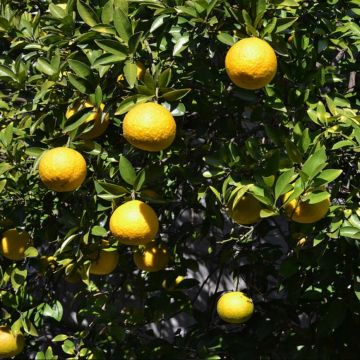
Available in 1 sizes

Available in 3 sizes
Available in 2 sizes
Available in 1 sizes
Available in 1 sizes
Available in 1 sizes
Available in 3 sizes
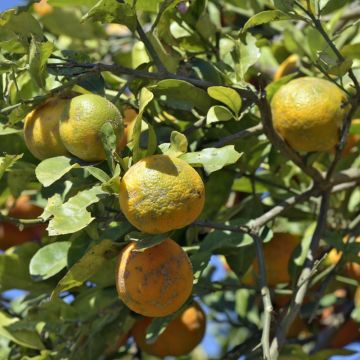
Available in 1 sizes
Growing citrus trees in containers
Citrus trees are sensitive to cold, and container planting is often preferred, especially in regions with harsh winters. This method makes it easier to protect them from freezing temperatures by bringing them indoors or under cover during winter.
When to plant?
The ideal time to plant citrus trees is in spring, when temperatures begin to warm, typically around April. By this time, the risk of frost has passed, allowing young plants to establish strong roots and benefit from favourable growing conditions during the milder temperatures of the warmer months.
However, if you live in a Mediterranean or coastal climate where winters are milder, autumn planting between September and October is also possible. This gives them time to develop a robust root system before summer arrives while avoiding periods of excessive heat.
How to plant citrus trees in pots?
Container planting is ideal for those wishing to grow citrus trees in regions where the climate is unsuitable for planting them directly in the ground. Here are the key steps for successful planting.
1. Choose the right pot or container
Opt for a large pot or container at least 40–50 cm in diameter, with drainage holes at the bottom to allow excess water to escape and prevent waterlogging, which can cause root rot. Terracotta pots are a good choice as they promote root aeration, or you could use a wooden planter for better insulation and aesthetics. For larger citrus trees, such as lemon or orange trees, a container with wheels is recommended. This makes it much easier to move the plant indoors for winter or reposition it for optimal sunlight.
2. Prepare the root ball
Before planting, soak the root ball thoroughly. Place it in a bucket or basin of water for about 20 minutes. This helps the roots absorb moisture, aiding the plant’s recovery once potted.
3. Prepare the base of the pot
Add a drainage layer about 5–10 cm deep at the bottom of the pot. Use clay pebbles, gravel, or even broken pottery shards. This step is crucial to prevent water from pooling around the roots, which can lead to rot—a common issue with potted citrus trees.
4. Prepare the potting mix
Citrus trees thrive in light, well-draining soil. Mix a special citrus compost with garden soil, a little sand to improve drainage, and well-rotted compost to enrich the substrate. This blend provides nutrients while ensuring good root aeration. Add a layer of this mix over the drainage layer.
5. Position the tree
Gently remove the citrus tree from its original container and place it in the centre of the pot. Ensure the root collar (where the roots meet the trunk) sits slightly above the soil level to prevent rot.
6. Fill with potting mix
Add the remaining soil mix around the root ball, filling gaps, then lightly firm it with your hands to stabilise the tree. Avoid compacting too tightly, as roots need air circulation.
7. Water thoroughly
Once planted, water generously to moisten the entire substrate and help the root ball settle. Watering also naturally firms the soil without over-compacting it.
8. Place the pot outdoors
Position the pot in a sunny spot, ideally on a terrace, balcony, or courtyard. Citrus trees need at least 6 hours of sunlight daily to thrive and fruit. Avoid exposing them to strong winds, which can dry out leaves and weaken the plant. A sheltered south-facing wall is ideal for capturing warmth while protecting the tree.
Did you know?
Some citrus varieties, like the calamondin, can be grown indoors. This decorative citrus, with its tangy little fruits, thrives in bright, room-temperature conditions, making it perfect for apartment or conservatory growing.
Read also
How to Water a Lemon Tree ProperlyPlanting in the ground
Planting citrus trees in the ground is possible, provided you have a favourable climate, generally mild in winter, such as that found in Mediterranean regions or coastal areas. Here are the detailed steps for successful planting.
Where to plant?
Citrus trees thrive in full sun. Ideally, position them against a south-facing wall to ensure a warm and maximally sunny spot.
Plant them sheltered from cold or drying winds. They also dislike sea spray.
Plant your citrus trees in the ground if you live in the Mediterranean region. Elsewhere, they should be grown in pots and brought indoors for winter.
Avoid chalky soils, which may cause chlorosis by blocking mineral absorption. Citrus trees prefer neutral or slightly acidic soils. However, some rootstocks, like bitter orange, tolerate chalky soils. If your soil is chalky, it’s best to add heather soil or grow the citrus in a pot.
Although citrus trees appreciate moist soil, avoid heavy, waterlogged soils that retain water in winter. Such conditions encourage fungal diseases and reduce cold resistance. Citrus trees prefer sandy soils. Plant them in well-draining, light soil. You can add pumice, gravel, or coarse sand to improve drainage. Conversely, if your soil is too sandy, water and minerals may leach quickly; in this case, enrich the soil with organic matter or compost.
Avoid planting them too close to other plants, as their shallow roots dislike competition.
→ Learn more with our guide: Which citrus tree to plant for your region?
When to plant?
As citrus trees love warmth, plant them in spring, around April. This gives them time to establish while the soil warms. In mild climates (French Riviera, Corsica…), autumn planting is also possible.
How to plant in the ground?
1. Prepare plant spacing
If planting multiple citrus trees, leave at least four to five metres between each to prevent competition for light, water, and nutrients. This spacing also improves airflow, reducing fungal risks.
2. Dig a large planting hole
Dig a hole at least twice the size of the root ball. A spacious hole encourages root expansion and faster growth. Loosening the surrounding soil aids rooting.
3. Prepare the hole base
Loosen the base with a fork, then add well-rotted compost. Incorporate nitrogen-rich amendments like bone meal or dried blood to boost growth. For clay soil, mix in coarse sand or gravel to enhance drainage.
4. Position the citrus tree
Gently remove the root ball from its container and place it in the hole. Ensure the graft union (where rootstock and scion meet) remains above soil level to prevent rot.
5. Backfill and firm the soil
Gradually refill the hole, firming the soil gently to anchor the plant without suffocating roots.
6. Stake the tree
Staking is highly recommended, especially in windy areas. Use a sturdy stake and secure the tree with a soft tie to avoid bark damage.
7. Water thoroughly
After planting, water generously to help roots settle. Consistent watering is crucial in the first weeks.
8. Create a watering basin
Form a shallow basin around the trunk to retain water and direct it to the roots.
9. Choose the ideal spot
Citrus trees need full sun to fruit well. Plant them in a south-facing, sheltered location, away from strong winds.
Care and Pruning of Citrus Trees
Citrus plants dislike drought; they require regular watering from spring to autumn (you can reduce watering in winter). Avoid using hard water; rainwater is preferable. We recommend applying a layer of mulch at the base of your shrubs to keep the soil moist for longer and reduce watering frequency. This will also suppress weed growth and provide extra protection against cold. To save time, consider installing a drip irrigation system.
Citrus plants are heavy feeders with high mineral requirements. From spring to autumn, during the growing season, regular fertilisation is essential. A nutrient-deficient plant will develop yellowing leaves and produce fewer fruits. Apply well-rotted compost at the base of the shrub and lightly fork it into the soil. You can also add fireplace ashes or crushed horn.
Whenever working around citrus plants, take care not to damage the shallow roots just below the soil surface.
In winter, if grown outdoors, use horticultural fleece to protect them from the cold. Similarly, the shrub will withstand cold better with a layer of mulch at its base and shelter from wind (for example, by planting windbreak shrubs nearby).
If planted outdoors in a mild climate or with a hardier citrus variety, remain vigilant and protect your shrub during exceptionally cold spells, especially in its early years. Use horticultural fleece and apply mulch at the base.
Prune your citrus plants after fruiting, in late winter or early spring. Pruning maintains a balanced shape, removes unsightly branches, and makes harvesting easier by controlling height. In the first few years, perform formative pruning to establish the shrub’s structure—for example, a rounded shape or standard form. In subsequent years, carry out maintenance pruning to open up the centre and maintain shape. Remove dead, damaged, or poorly positioned branches, and cut back water shoots. Learn more in our tutorial Why and How to Thin Fruit Trees?
Make clean, light cuts every two years on average, disinfecting tools to prevent disease spread. Apply pruning sealant to wounds to reduce fungal risks like Mal Secco.
Potted citrus requires more frequent pruning than ground-grown plants to control growth. Light pruning can be done several times a year.
→ Further reading: “Citrus: When and How to Prune”, Pruning a Lemon Tree, and 6 Cold-Hardy Citrus Varieties and Why Aren’t My Citrus Plants Fruiting?
Maintaining Potted Citrus Plants
Potted citrus requires more frequent watering than ground-grown plants, as compost dries faster. Keep the substrate moist but not waterlogged—reduce watering in winter. Avoid water stagnation in saucers (empty after watering). Indoors, mist foliage regularly.
→ Detailed guidance in Solenne’s Lemon Tree Watering Tutorial
Potted citrus also has higher fertilisation needs. From spring to autumn, apply liquid fertiliser monthly. Use specialist citrus fertilisers.
Repot citrus every three to four years, ideally in late winter/early spring, moving to slightly larger pots. In intervening years, top-dress by replacing the top 3-4cm of compost. Take care not to damage surface roots.
Overwinter potted citrus frost-free in a bright, ventilated space like an unheated conservatory or greenhouse (ideally around 8°C). Avoid heated indoor spaces—citrus prefer cooler conditions. Mist foliage indoors to counter dry air. Return pots outdoors after frost risk passes.
→ Discover more:
Diseases and Pests of Citrus Trees
Citrus trees are susceptible to numerous diseases and pests. Appropriate growing conditions help minimise the risks of their appearance: regular watering without excessive moisture, planting in full sun, overwintering under shelter if necessary, clean pruning with the application of healing paste, etc.
Citrus trees can be affected by Mal secco. This fungal disease blocks sap circulation, leading to branch desiccation. The disease first affects branches at the extremities of the plant, eventually causing the entire shrub to wither. Cut and burn affected branches as soon as you notice the disease appearing.
They can also sometimes suffer from gummosis. This is identified by the secretion of an amber-coloured translucent substance at the site of a wound. Brown rot is a fungal disease that causes fruit to rot while still attached to the shrub. Remove affected fruit. As for Tristeza (or CTV, Citrus Tristeza Virus), this is a virus, mainly transmitted by aphids, which causes citrus trees to decline.
As for pests: In greenhouses, citrus trees are affected by mealybugs, whiteflies and red spider mites. Mealybugs and whiteflies pierce plant tissues to extract sap, secreting honeydew which can lead to sooty mould. To eliminate them, we recommend spraying the foliage with black soap. As for red spider mites, they suck the plant’s sap, causing leaves to yellow, then dry out and fall. They thrive in dry conditions – don’t hesitate to mist the foliage.
Aphids also attack citrus trees by piercing leaves, causing them to curl in on themselves. You can use black soap. The Mediterranean fruit fly lays its eggs in the fruit. The larvae feed on them, causing premature fruit drop. The caterpillars of the citrus leafminer nibble on citrus flower buds as well as young leaves. Finally, leaf miners tunnel through the thickness of leaves. These white, sinuous tunnels are visible to the naked eye. Affected leaves tend to curl, yellow, dry out, and eventually fall. We advise cutting and burning affected leaves.
→ to learn more, read our articles: Diseases and pests of lemon trees and “Citrus trees: 15 Q&A about their cultivation”
Propagation
The most reliable technique for propagating citrus trees is grafting. However, this method requires time and is more suited to professionals.
Sowing
You can easily propagate citrus trees from seed, but plants grown from seed take a long time to start producing fruit, and there’s a chance they won’t be identical to the original variety. Sow the seeds in spring.
- Collect the pips from inside the citrus fruit and rinse them to remove any pulp. It’s best to sow the seeds immediately while they’re still fresh or store them in the fridge until ready.
- We also recommend soaking them in warm or tepid water for at least 24 hours. Pips that float won’t germinate—only sow those that sink.
- Prepare a pot by filling it with compost mixed with a little sand.
- Sow the seeds.
- Cover them with about 1 cm of substrate.
- Water well.
- We recommend covering the pot with a plastic bag to create a warm, humid environment. Open it occasionally to ventilate and prevent mould growth.
- Place the pot in a bright spot, out of direct sunlight, at a temperature between 20–25°C.
- Keep the substrate moist until germination, which takes about three weeks.
- Transplant the seedlings when they reach around 10 cm in height.
Cuttings
Taking cuttings is a simple and effective way to propagate citrus shrubs and produce new plants from existing shoots. The ideal time for this method is summer, when semi-hardwood shoots are mature but not yet fully hardened.
1. Take the cutting
Choose a healthy, vigorous branch and take a semi-hardwood cutting about 15 cm long. Semi-hardwood is the part between the soft tip and the harder, woody base. Make a clean cut just below a node (where a leaf attaches to the stem), as this area contains cells that promote root development.
2. Prepare the cutting
After taking the cutting, remove the lower leaves to reduce transpiration. Keep only two or three leaves at the top for photosynthesis while minimising dehydration risk. You can also trim the remaining leaves in half to reduce evaporation.
3. Prepare the substrate
Use a medium-sized pot filled with a light mix of compost and sand or perlite for good drainage. Citrus plants prefer well-aerated soil. Firm it gently to stabilise the substrate while keeping it loose enough for young roots to develop.
4. Using rooting hormone (optional)
Dip the base of the cutting in rooting hormone to encourage root growth. This step boosts success rates, though it’s optional.
5. Plant the cutting
Insert the cutting into the pot, burying about a third of the stem. Gently firm the soil around it to hold it in place without compacting too much.
6. Water thoroughly
Water generously to moisten the substrate. Good humidity is key for rooting, but avoid waterlogging to prevent rot.
7. Create a humid environment
Cover the pot with a transparent plastic bag or lid to create a warm, humid microclimate. This reduces transpiration and maintains steady moisture levels, aiding root development.
8. Choose the right spot
Place the pot in bright, indirect light—direct sun can dry out the cutting.
9. Monitor progress
After a few weeks, gently tug the stem to check for roots. If it resists, roots have formed. Once rooted, remove the bag and gradually acclimate the plant to sunlight. Be patient—citrus cuttings can take months to root fully.
Grafting
Grafting delivers the best results, ensuring productive and reliable plants. One advantage is the ability to choose rootstocks tolerant to lime, such as bitter orange.
Bud graft in summer (July–September). Suitable rootstocks include bitter orange, Poncirus trifoliata, or citrange (a cross between orange and Poncirus).
- Make a T-shaped cut on the rootstock using a knife.
- Take a bud from the variety you want to propagate. Peel it off by cutting the bark, avoiding any wood.
- Insert it into the rootstock’s cut, lifting the bark slightly to align the tissues. The bud should fit snugly—trim any excess at the top.
- Secure the graft with raffia, leaving the bud exposed.
- Water generously.
- Once the graft takes and the scion grows, prune the rootstock to 15 cm above the bud.
→ Learn more about grafting citrus trees in our tutorial!
Air Layering
Citrus trees can also be propagated by air layering. Do this in spring (April–May).
- Select a healthy, upright branch, remove leaves or side shoots at the base, then make two circular cuts with a knife to create a ring. Remove this strip of bark.
- Place a plastic bag below the cut and secure it with a rubber band or tape. Fill the bag with compost mixed with peat moss (or another water-retentive medium) and moisten it. Seal the bag above the cut and wrap it in foil to keep the substrate dark.
- Keep the substrate moist until roots form. If it dries out, open the bag to rehydrate.
- Once roots develop in the substrate pouch, cut the branch below it to separate the new plant from the parent and pot it up.
Combining Citrus Fruits in the Garden
It’s not always easy to pair citrus plants when grown in containers, but if you live in the Mediterranean region or have chosen hardy varieties (such as Poncirus or the ‘Satsuma’ mandarin), you can easily incorporate them into your garden. You can enjoy the fragrance of citrus leaves and flowers to create a scented garden by combining them with other delicately perfumed plants. For example, plant a bitter orange tree alongside lavender, jasmine, rosemary, or myrtle. Choose plants rich in essential oils. Many of these plants also have medicinal properties—some can be used for herbal teas or to flavour dishes.
For a garden that evokes the south, holidays, and sunshine, pair citrus trees with other Mediterranean-style plants. Consider santolina, Jerusalem sage, olive trees, oleander, or rockrose. Create a dry, rocky bed and add a few succulents—sedums, prickly pears, echeverias, or euphorbias. For a holiday feel, and if space allows, you might even plant a few palm trees.
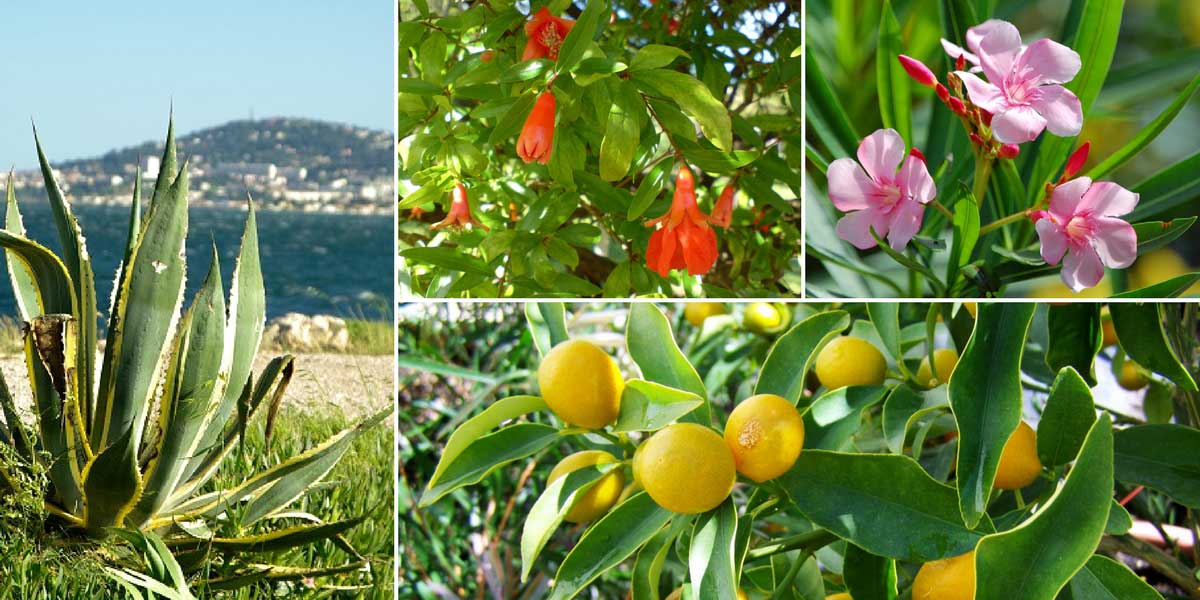

Citrus trees can be integrated into a Mediterranean-style garden. Here, Agave americana ‘Variegata’, Punica granatum var. Nana, Nerium oleander (photo Challiyan), and a lemon tree
Don’t hesitate to mix different citrus varieties. You could create a small collection by grouping orange, lemon, kumquat, and clementine trees. Their combined blooms will enhance the fragrance, while the clustered fruits will bring warmth and vibrancy to the garden with their bright yellow and orange hues. Consider adding other useful fruit trees, such as sea buckthorn, olive, strawberry trees, figs, or capers, to create a Mediterranean-style orchard.
Finally, thanks to its large thorns, you can use Poncirus trifoliata as a defensive hedge—either by planting several specimens together or alternating with other thorny shrubs (Pyracantha, Berberis, Rosa rugosa…).
Did you know?
- Menton and the Lemon Festival
The town of Menton, on the French Riviera, enjoys a climate ideal for growing citrus fruits. For several hundred years, lemon trees have been cultivated here. Highly renowned, the Menton lemon now holds a PGI (Protected Geographical Indication) label. Every year, at the end of winter, the town hosts the Lemon Festival, featuring a parade with numerous floats, sculptures and decorations made from citrus fruits.
- An indoor citrus plant
Citrus mitis, the calamondin or dwarf orange tree, is one of the few citrus plants that can be grown indoors all year round, for example in a flat.
- Medicinal properties
In addition to being rich in vitamin C, citrus fruits also have many medicinal properties. They are invigorating, reduce the risk of cardiovascular diseases, and purify and detoxify the body. They also have an antioxidant effect. Grapefruit seed extract has antibiotic properties, helping to fight fungi, microbes and bacteria. The essential oil of the bitter orange tree (neroli) as well as orange blossom water are known to soothe anxiety and promote sleep.
Useful resources
- Discover our range of citrus trees!
- All our tips for growing an orange tree in a pot
- An article by Ingrid on our blog – Yuzu: A Highly Sought-After Japanese Lemon Tree
- Our advice sheet – Citrus Trees: Planting and Care
- Discover our selection of 7 Citrus Trees to Grow in Pots
- Discover our tips for growing bergamot, growing calamondin
- An article by Michael – Poncirus trifoliata, An Ornamental Citrus Tree with Plenty of Prickles
- A blog about citrus trees and their cultivation
- You can also check out the book Citrus Trees – How to Choose and Grow Them Easily, by Bénédicte and Michel BACHES, published by Ulmer
- Discover our tutorials: How to Make Pomanders?, and How to Make Bergamot Syrup?
- Learn more about growing Yuzu with Leïla’s advice!
- Learn more about the Lemon Festival ® in Menton with Sophie on the blog
- Our advice sheets: Growing Kumquat; Growing Combava Lemon; Growing Bitter Orange
- Our advice sheet: Citrus Trees: How to Get Fruit?
- A quirky and humorous article: How to Fail at Winter Citrus Tree Care?
- Our citrus recipes and culinary uses: Homemade Citrus Marmalade: My Revisited Recipe, How to Make Homemade Preserved Lemons? and the English Lemon Curd Recipe.
- Listen to our podcast on growing potted lemon trees:
- Subscribe!
- Contents
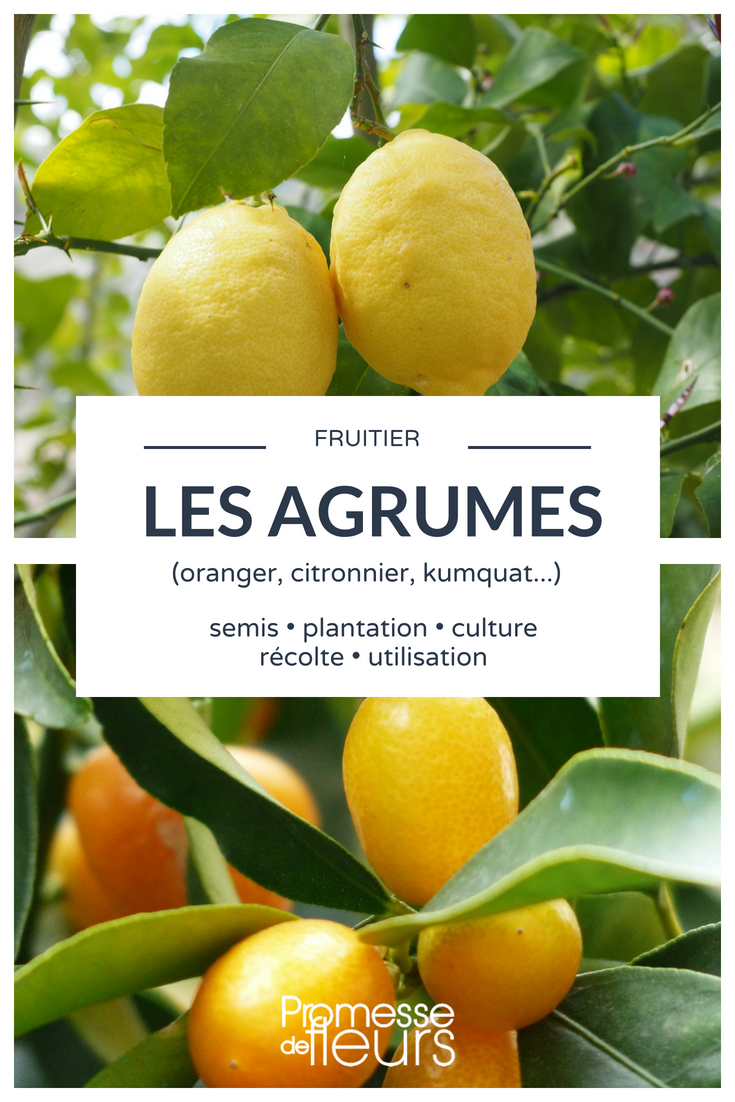




































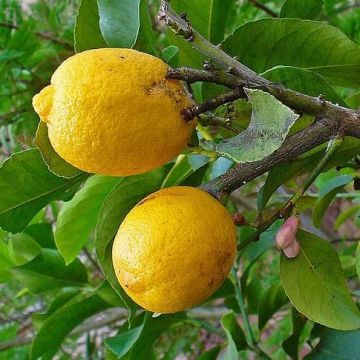

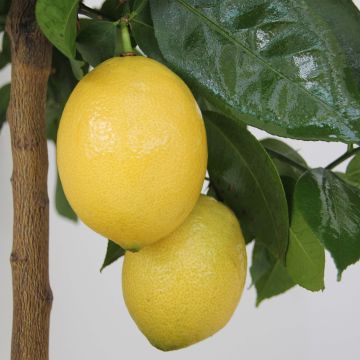
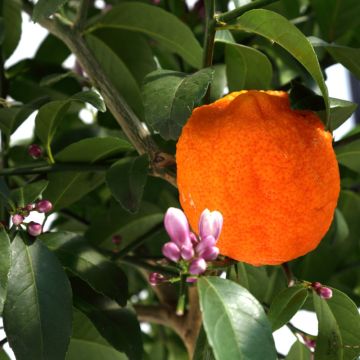

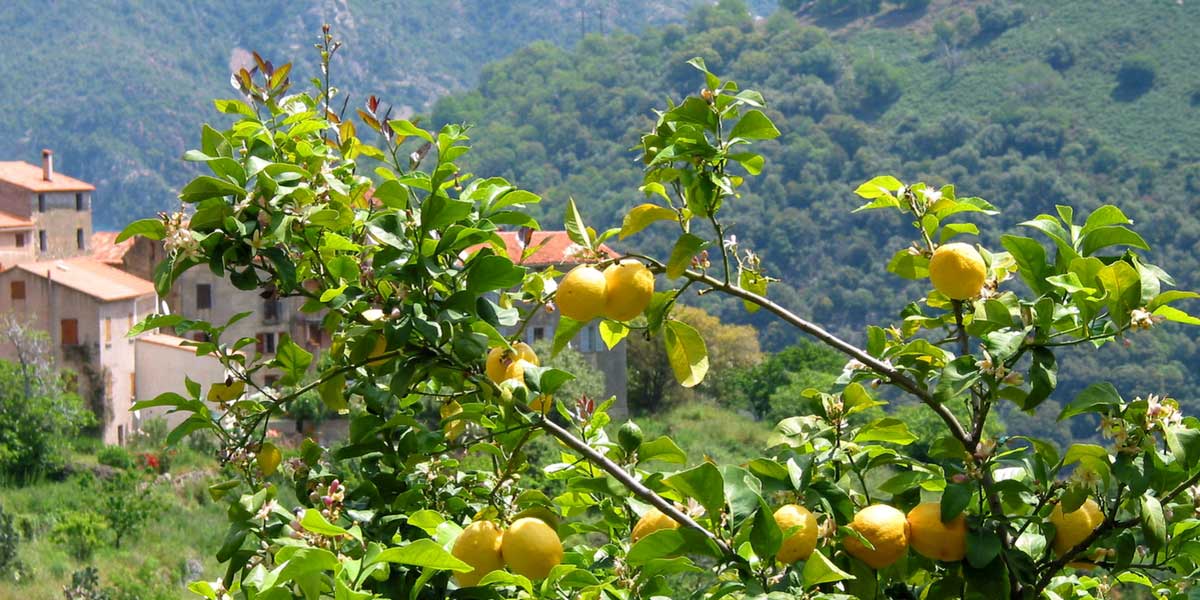
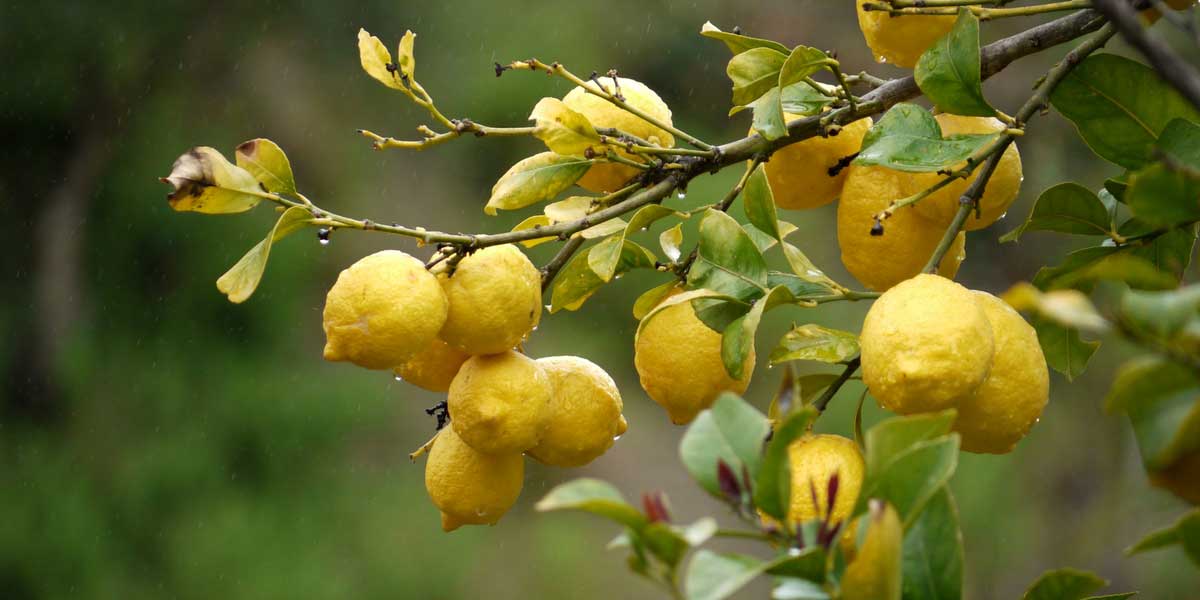
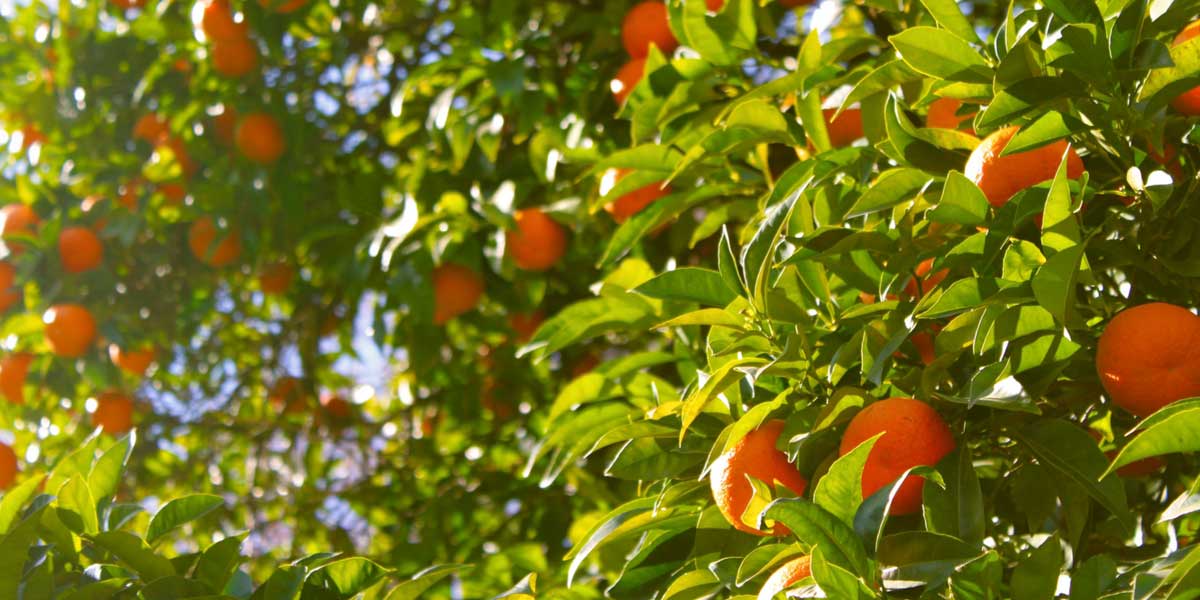
Comments